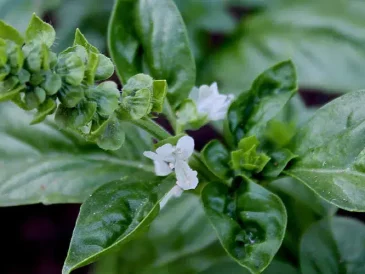Money can fail you, people can fail you, and everything else on this planet can fail you. But, something that won’t ever fail you is the mighty strawberry.
If you were out on a search for the best strawberry growing tips, you’ve landed in the right place! Let’s go over 12 solid tips used by professional gardeners to grow those big and juicy strawberries you probably dream of.
12 Pro Tips For Growing Big, Juicy Strawberries At Home

1: Choose The Right Variety For You

There are tons and tons of different strawberry varieties out there ranging from basic to strange and extremely interesting. To make things simple, just understand these 3 different categories:
- June-Bearing: These strawberry plants produce one single harvest per year, but it’s usually large enough to be fulfilling.
- Everbearing: Everbearing strawberry plants produce multiple smaller harvests throughout the growing season, meaning a more spread out but consistent fruit yield.
- Day-Neutral: Day-neutral plants consistently produce berries throughout the growing season regardless of day length as long as temperatures remain relatively stable.
Also, it’s super important to choose a variety that suits your growing zone. Different strawberries thrive in different climates, so picking the right one can make all the difference.
If you’re unsure which variety is best for your area, this guide breaks it down perfectly: The Best Strawberry Varieties For Every Growing Zone!
2: Plant In Full Sun

Strawberries love a good sunbath. Unfortunately, they don’t do very well in full or partial shade and need to be planted in a spot that receives at least 6-8 hours of sunlight on a daily basis. The best fruiting is achieved this way.
3: Used Raised Beds Or Containers

Using raised garden beds helps strawberry plants stay protected from certain diseases and have better drainage. These two factors combined are essential for maintaining good yields in the long run and keeping the plants healthy.
4: Start With Quality Soil

Instead of using store-bought potting mix or some kind of pre-made formula, make your own soil. This DIY soil will be rich in beneficial nutrients and have improved texture and drainage thanks to the sand.
And, making your own seed-starting mix gives you full control over the ingredients, ensuring your plants get the best possible start. This guide walks you through the process step by step: Homemade Seed Starting Soil!
5: Mulch With Straw Or Pine Needles

Mulching your strawberry plants helps with retaining moisture and keeping the berries fresh and healthy. If consistent watering is an issue for you, you can mulch with straw or pine needles to keep your strawberry plants from drying out completely.
6: Cut Off The Runners

This is probably one of the most important tips of this whole post!
If you want healthy and productive strawberry plants, make sure to cut off the runners (also called suckers). These long, vine-like stems take energy away from the main plant, leading to smaller berries. So, trim the runners regularly so the plant can focus on fruit production.
If you’d like to learn more about it, this guide explains exactly: Why Cutting Strawberry Runners Boosts Fruit Yield!
But, if you want to propagate new plants, you can let a few runners root in small pots before cutting them from the mother plant!
7: Water Consistently!

When it comes to water, strawberries need a lot of it…consistently. There’s nothing wrong with long gaps between watering sessions, but make sure you keep things consistent in the long run. Deep, infrequent watering prevents dry fruit.
8: Pinch First-Year Flowers

Pinching is a practice that has been overly diluted by the gardening community and, now, nobody talks about it. However, it’s super useful and can improve fruit yields drastically if done the right way.
Pinching flowers from the first year is generally the best way to go about it, and it should lead to stronger plants and improved yields in no time.
9: Feed With Organic Fertilizer

Whether you have fertilization issues and nutrient deficiencies or not, it’s still very important to feed your strawberry plants with fertilizer, especially in the growing season to support growth and overall crop health.
Rich, nutrient-packed soil is more likely to lead to rich, flavorful berries than poor, neglected soil. A balanced organic fertilizer should typically work well for this as long as you keep feedings consistent.
I recommend you try some of these fertilizers:
- Coffee Grounds – This is my favorite tip! Spread used coffee grounds (let them dry in the sun before using them!) around the strawberry plant. They add nitrogen to the soil and improve soil texture. Plus, worms love coffee grounds!
- Epsom Salt – I’ll teach you a homemade recipe… Add 1 tbsp of Epsom salt with a gallon of water and mix well! You have in your hands a powerful homemade mixture that you should spray on the leaves of your strawberries plants every 2 weeks to make them sweeter.
- Baking Soda – Spread baking soda on the base of your strawberry plants. This “magic potion” (as I like to call it!) reduces soil acidity and helps make strawberries sweeter!
10: Protect From Birds

Apart from pests, birds can be a real danger to your strawberry plants. I’ve had whole strawberries ripped out by birds once, which led to complete havoc in my backyard garden.
I’ve found that the best way to keep birds away is to hang reflective CDs around the garden. It does require some degree of effort, but, trust me, it will be worth it. If you just want to protect your fruit, netting is the ideal way to do so.
- Extra tip: Do you have cinnamon at home? So, all you need to do is sprinkle cinnamon powder on the base of your strawberry plants! It will prevent the appearance of fungus, mold and pest attacks. It’s something simple, but it really works!
11: Rotate Plants Every 3 Years

Crop rotation is something I encourage all gardeners to practice. By not planting the same crops in the same area every year, you keep the nutrients in the soil from being fully depleted and fungal or bacterial diseases at bay.
After growing strawberries, you can rotate with beans or peas to restore nitrogen, carrots or beets to improve soil structure, or garlic or onions to deter pests and maintain soil health
If you’re new to crop rotation or want to learn more about how to do it effectively, this guide covers everything you need to know: Crop Rotation 101: The Key To Sustainable & Productive Gardening!
12: Harvest At Peak Ripeness

Many growers make the mistake of diligently growing their strawberries but harvesting them too early, which often results in inconsistent ripeness and some very unpleasant tasting berries.
For the sweetest taste, pick your strawberries only when they’re fully red.


